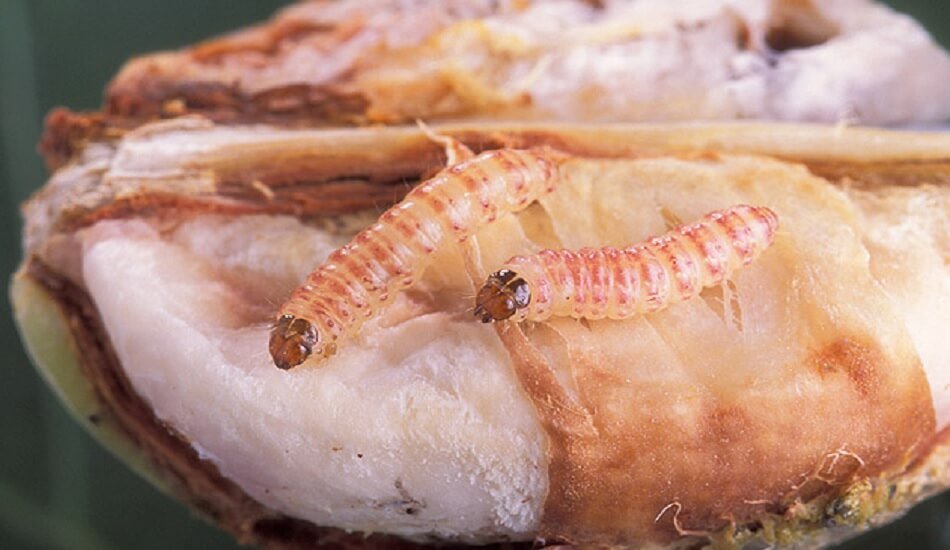‘Project Bandhan’ to use mating disruption technique to stop the spread of cotton PBW.
As the pink bollworm spreads through cotton plants in North India, the Central Institute of Cotton Research (CICR), State agricultural universities, and private players like the South Asia Biotechnology Centre (SABC) are showing how technologies like mating disruption and pheromone traps can be used to get rid of this terrible pest.
‘This season in North India, we want to show how the mating disruption technologies work. There will be 30–40 demonstrations from different groups,’ said Y G Prasad, Director of the Central Institute of Cotton Research (CICR). He said that the protection should be set up for the whole season, from when the plants are in bloom until they are picked.
Also Read | To combat pink bollworm pjtsau is developing single pick cotton variety.
Innovative technique
Mating disruption is a new technique that uses pheromones to stop PBW from reproducing in a way that makes the population drop by a lot and causes the least amount of damage to crops. The Central Insecticide Board and Registration Committee (CIBRC) approved the technology in the integrated pest management (IPM) strategies for controlling PBW in India for the first time in 2019-20.
As part of this, CICR and the other players have made PBKnot, a solid metric dispenser rope that can be easily tied to cotton plants. The PBKnot fills the air around it with Gossyplure, a pheromone smell that confuses the male adults and stops them from finding and mating with female adults. This lowers the number of eggs laid and keeps the PBW population under control.
‘The mating disruption has become a powerful tool to control pests like PBW,’ said Bhagirath Choudhary, Director of the South Asia Biotechnology Centre (SABC) in Jodhpur. This Kharif, SABC is running a large-scale project called ‘Project Bandhan’ to stop the spread of PBW in 16 districts of seven major cotton-growing States.
Depending on the use of chemical spray
PBW has become a major pest that hurts almost 12 million hectares of cotton in India every year. Spraying chemicals is the most common way to get rid of pink bollworms now. Choudhry said that because there aren’t many highly effective insecticides, it’s getting harder and harder to get a high level of suppression. This is because the PBW population is well-established in many cotton-growing areas.
Project Bandhan will be carried out in 19 clusters, each of which is about 62.5 acres and covers a total of 1,200 acres across the country. This will be done in partnership with Ambuja Cement Foundation, PI Foundations, Agrovision Foundation, State Agriculture Universities, KVKs, and local organizations, and under the technical guidance of ICAR-Central Institute for Cotton Research (CICR), Nagpur.
In the northern zone, the tagging of mating disruption PBknot has been finished on 469 acres, and more than 250 farmers have been trained on PBW and tagging of mating disruption PBKnot technology, as well as the installation of pheromone traps for monitoring. The project is being done in the Punjab districts of Bhatinda, Mansa, and Fazilka, which cover about 193 acres. In Haryana, the demonstration project is taking place in the districts of Sirsa and Fatehabad, which cover about 152 acres. In the same way, the PBKnot project is being carried out in 124 acres in the districts of Hanumangarh and Ganganagar in the state of Rajasthan.
Also Read | Maharashtra’s cotton crop suffers demand and supply on fungal attacks.
Found to work effectively
The PBW has shown up early in the Kharif season in the north. It has a short life cycle and can have 4-5 generations in one crop cycle. Choudhary said that it could threaten cotton from its early stages, including its flowers, green bolls, and cotton locules, which could affect the quality of the cotton lint.
SABC used Project Bandhan to get rid of pests in the Central Zone during the last Kharif season. They found that it worked very well. ‘The results of the field experiment on 300 acres were encouraging because the pink bollworm caused 90 percent less damage and the cotton yield per acre went up by 1.5 to 2 quintals. ‘There was also a big drop in the number of damaged flowers and locules,’ Choudhary said.


















Add Comment